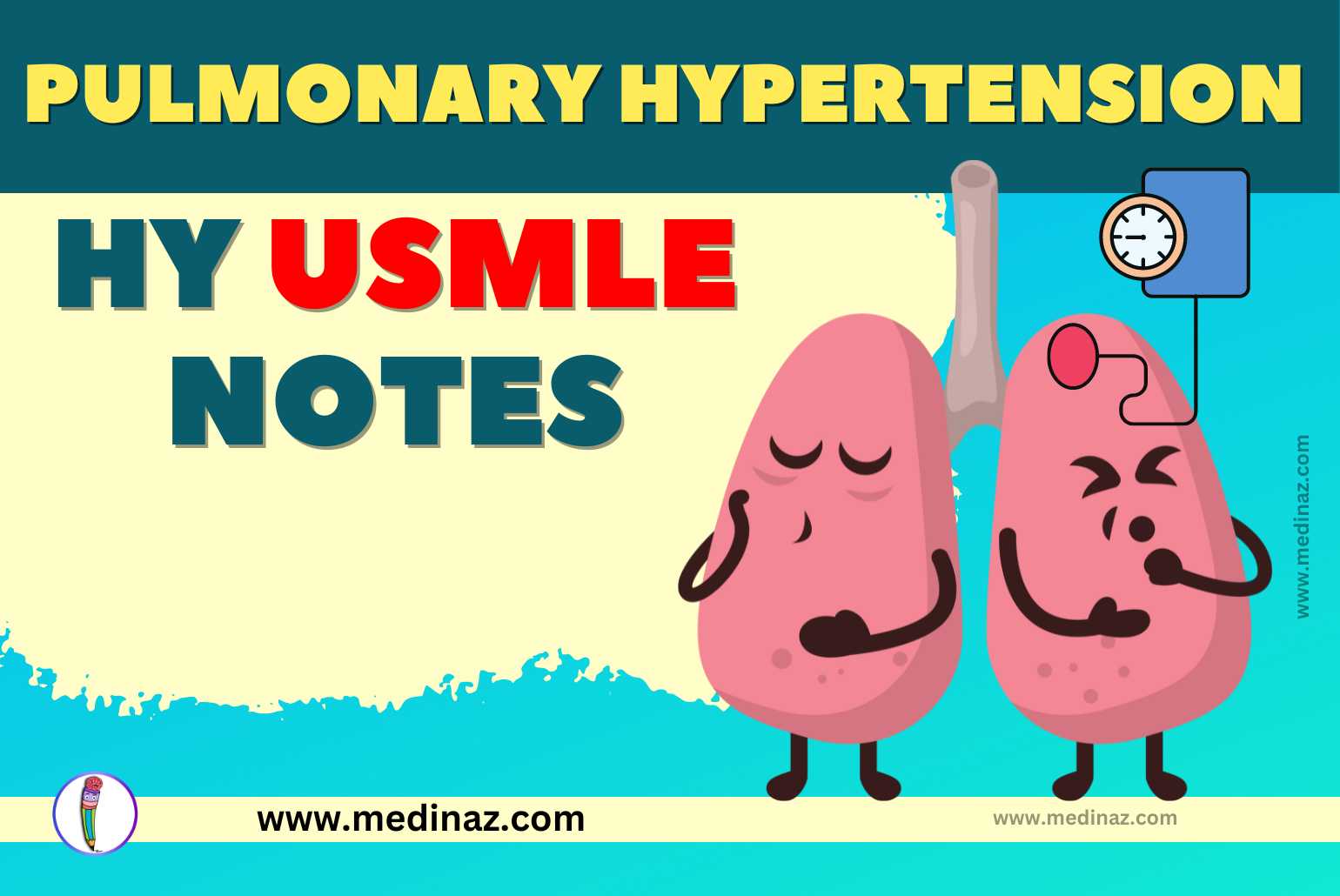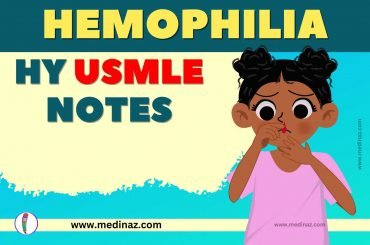Pulmonary Hypertension USMLE Notes & Mnemonics contains all the high-yield points you need to know.
Definition:
- Pulmonary Hypertension (PH): Elevated pressure in the pulmonary circulation. Defined as a mean pulmonary artery pressure ≥ 25 mmHg at rest, measured by right heart catheterization. (Ref)
Classification:
- Group 1: Pulmonary Arterial Hypertension (PAH)
- Group 2: Due to left heart disease
- Group 3: Due to lung diseases and/or hypoxemia
- Group 4: Chronic thromboembolic pulmonary hypertension (CTEPH)
- Group 5: Miscellaneous
Pathophysiology:
- Vasoconstriction and Vascular Remodeling: In PAH, leading to increased pulmonary artery pressure.
- Left Heart Disease: Leads to increased left atrial pressure and passive pulmonary hypertension.
- Chronic Hypoxemia: Causes pulmonary vasoconstriction (as in COPD).
Risk Factors:
- Group 1: Idiopathic, heritable, drug and toxin-induced, associated with connective tissue disease, HIV, portal hypertension, congenital heart disease.
- Group 2: Left ventricular systolic or diastolic dysfunction, valvular disease.
- Group 3: COPD, interstitial lung disease, sleep apnea.
- Group 4: Recurrent pulmonary embolism.
Clinical Features:
- Dyspnea on Exertion: Most common symptom.
- Chest Pain: Often exertional.
- Fatigue, Syncope
- Edema, Ascites (in advanced stages)
- Cyanosis, Clubbing (late findings)
Diagnosis:
- Echocardiogram: Initial screening tool, estimates pulmonary artery pressure.
- Right Heart Catheterization: Gold standard for diagnosis.
- Pulmonary Function Tests, V/Q Scan, CT Chest: Based on suspected underlying cause.
Management:
- Treat Underlying Cause: Essential in Groups 2-5.
- Group 1 (PAH):
- Vasodilator Therapy: Calcium channel blockers (for responders), phosphodiesterase-5 inhibitors (sildenafil), endothelin receptor antagonists (bosentan), prostacyclin analogs.
- Anticoagulation: Considered in idiopathic PAH.
- Oxygen Therapy: For hypoxemia.
- Diuretics: For right ventricular failure and fluid overload.
- Lung Transplantation: In select cases.
High-Yield Mnemonic: “WHO Puts Right Hearts To Pressure”
- World Health Organization (WHO) Groups
- Pulmonary artery pressure
- Right heart catheterization
- Treat underlying cause
- Pharmacotherapy
Chart: WHO Classification of Pulmonary Hypertension
| Group | Type | Features |
|---|---|---|
| 1 | Pulmonary Arterial Hypertension (PAH) | Idiopathic, heritable, drug-induced |
| 2 | Due to Left Heart Disease | LV dysfunction, valvular disease |
| 3 | Due to Lung Diseases and/or Hypoxemia | COPD, ILD, sleep apnea |
| 4 | Chronic Thromboembolic Pulmonary Hypertension (CTEPH) | Recurrent PE |
| 5 | Miscellaneous | Sarcoidosis, histiocytosis, others |
Note: Pulmonary hypertension is a complex disease with varied etiologies and presentations. The USMLE may test your ability to recognize its symptoms, understand the pathophysiological mechanisms, differentiate between the WHO groups, and know the general principles of management, especially for PAH. Diagnosis often involves integrating clinical findings with echocardiographic and hemodynamic data.
Check other important USMLE Notes
A Visual Learning Platform





